Brief for contemporary school buildings can vary a lot. Depending on the teaching paradigm, external conditions and economic situation, they can call for quite diverse architecture, landscape and interior design solutions. However, one thing is universal for all of them – encouraging children’s interaction, enthusiasm for learning and lively activities is always a top priority.
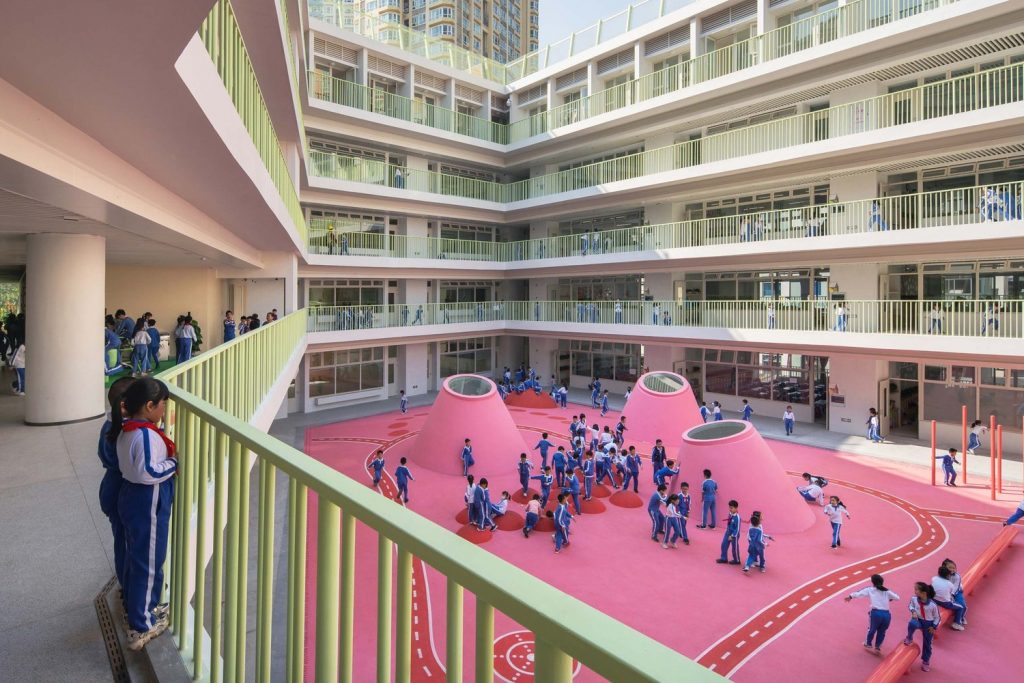

Xinsha Primary School by 11architecture (also header image)
The vision of the ideal school that Chinese practice 11architecture had in mind when designing Xinsha Primary School in Shenzhen, China, is that of children running and playing all over the campus. Aiming to rebuild the harmonious relationship between the 11,000sqm campus and the neighbourhood, the team chose to avoid using fences and designed an arcade instead. The function of the fence is therefore fulfilled by the height difference between the streets and the campus, covering the entire site with a podium and elevating the main activity ground up on the second floor.

Xinsha Primary School by 11architecture
The benches arranged along the arcade provide a resting space for students’ parents and community residents providing shade and a shelter from the rain. Looking up, they can see students playing on the platform. To echo the roadside trees growing along the street, the ceiling of the arcade is made of wood-textured concrete, while the walls are clad in rough-textured terracotta tiles.
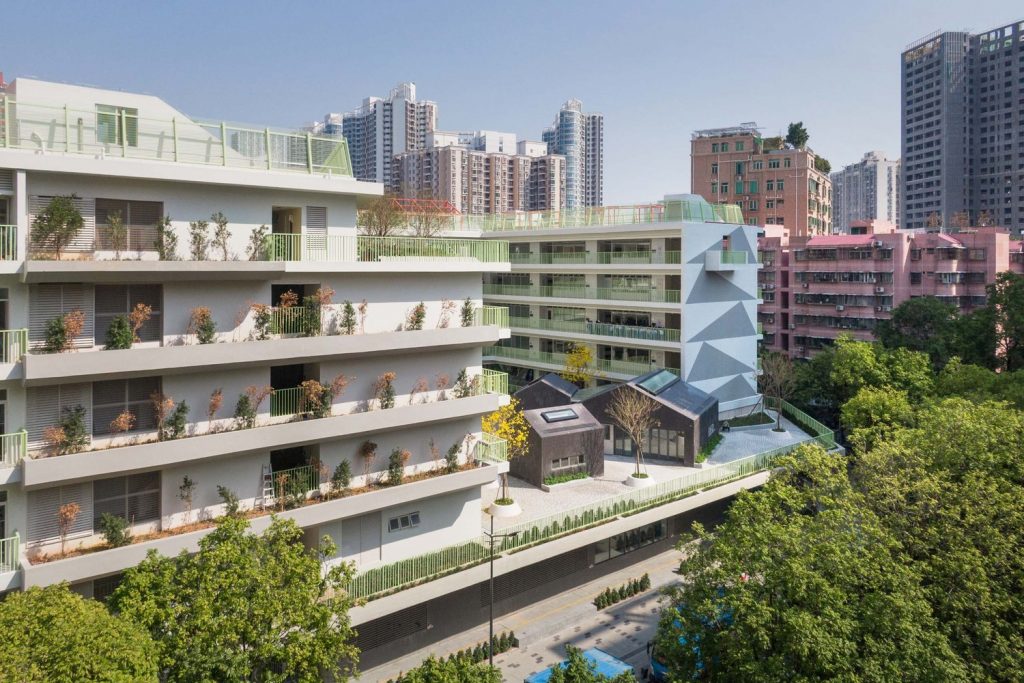
Xinsha Primary School by 11architecture
The S-shaped layout of the teaching building encloses two courtyards. The north courtyard opens towards the large playground of the school, while the south one faces the city. Thus, the design allows teachers and students to experience the sense of locality of the school and the community it is in, while walking through the building. Inside, functional rooms are lined by corridors and balconies, which makes the teaching building looks like layered slabs.
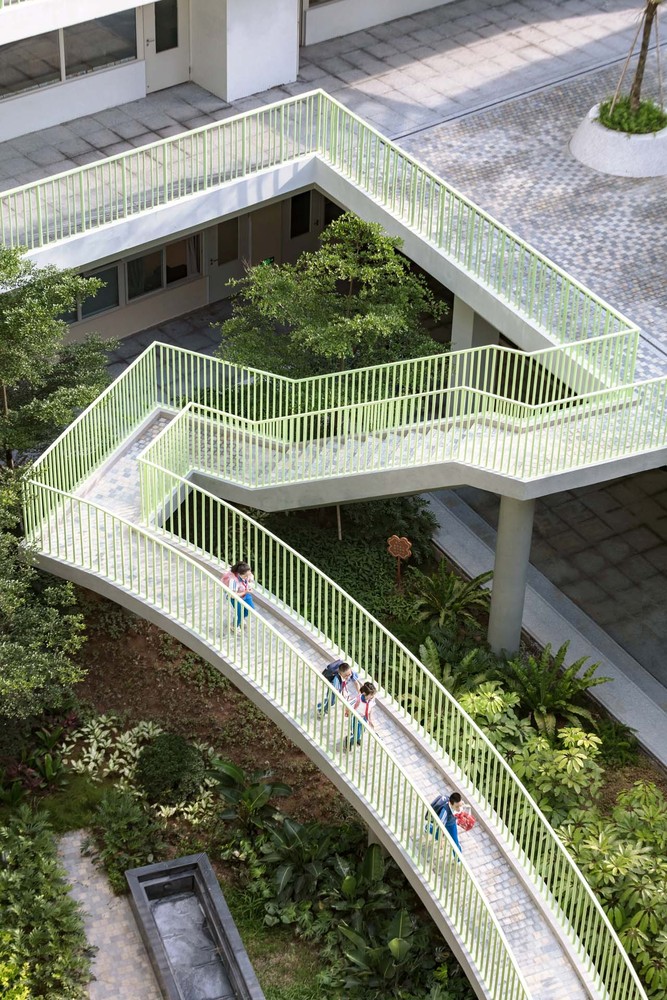
Xinsha Primary School by 11architecture
The solid balustrade wall of the teaching building has been replaced by the bright green guardrail that gives the façade its signature appearance. The team chose to forego the conventional guardrail design that combines columns and thin rods and opted for a combination of columns of various width arranged in a three-dimensional pattern. This solution looks adds more transparency and enhances a sense of connection.
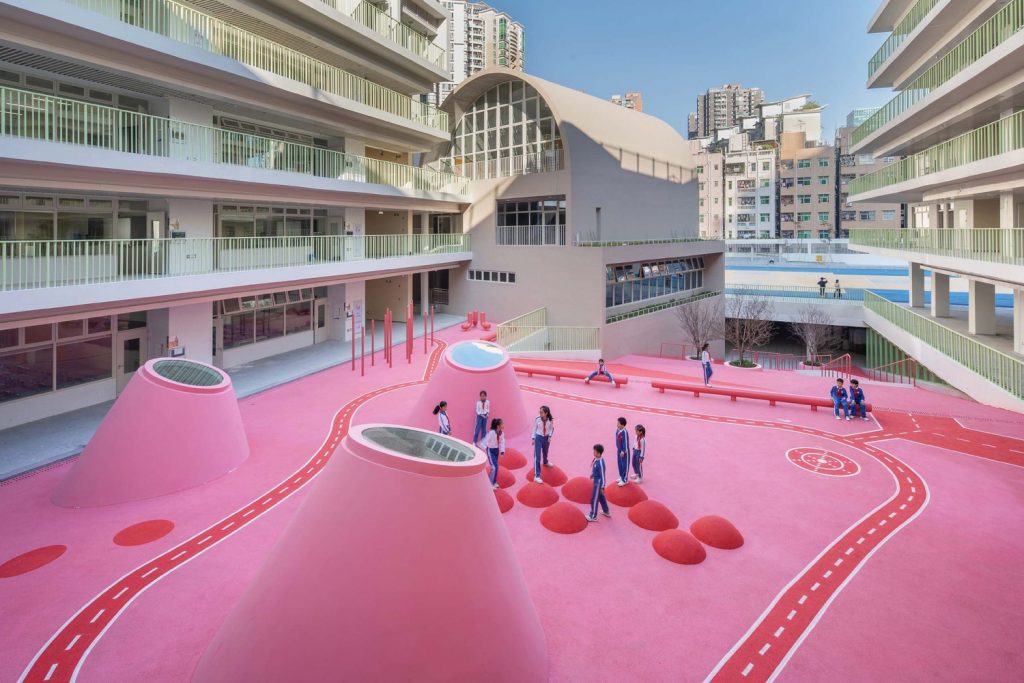
Xinsha Primary School by 11architecture
There is an array of themed playgrounds on the campus, their themes expressed through the architectural design that is inspired by various landscape forms – these include “Green forest”, “Village alley”, “Triangular hills”, “Dome castles”, “Hill road”, “Rooftop farms”, etc. The soft shapes contrasting the rectangular volumes of the building coordinate the scale of the structures and people and create a rich spatial experience.
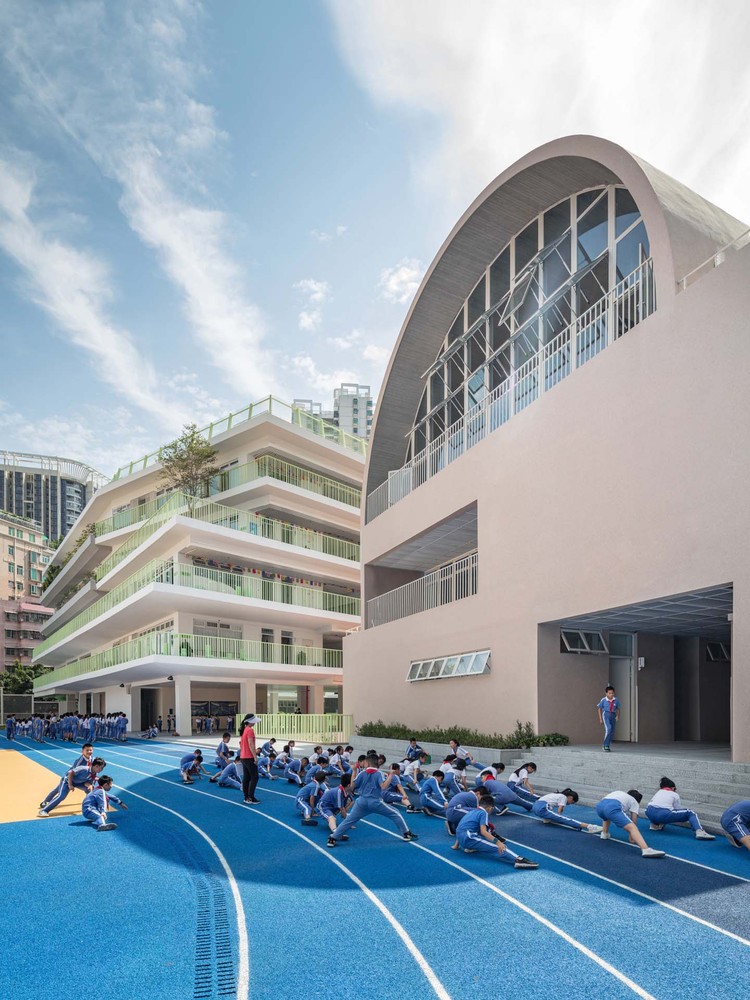

Xinsha Primary School by 11architecture
Additionally, the team has placed 49 installations of “little animals” in small public spaces on campus for students to play with them. Acting as landscape furniture or amusement facilities, they also encourage interaction between children.
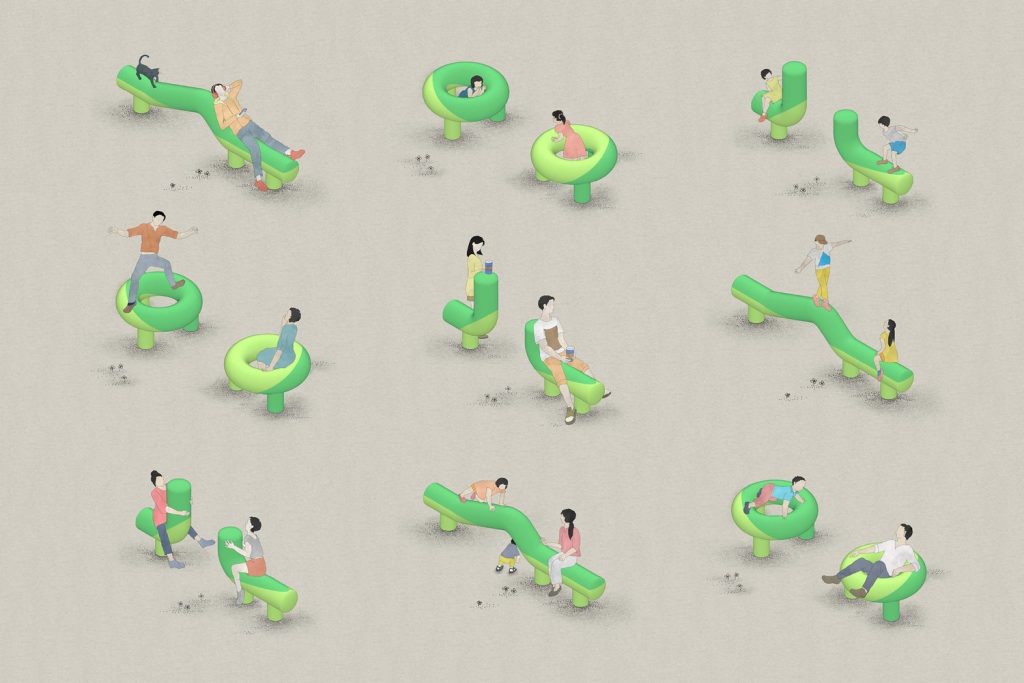
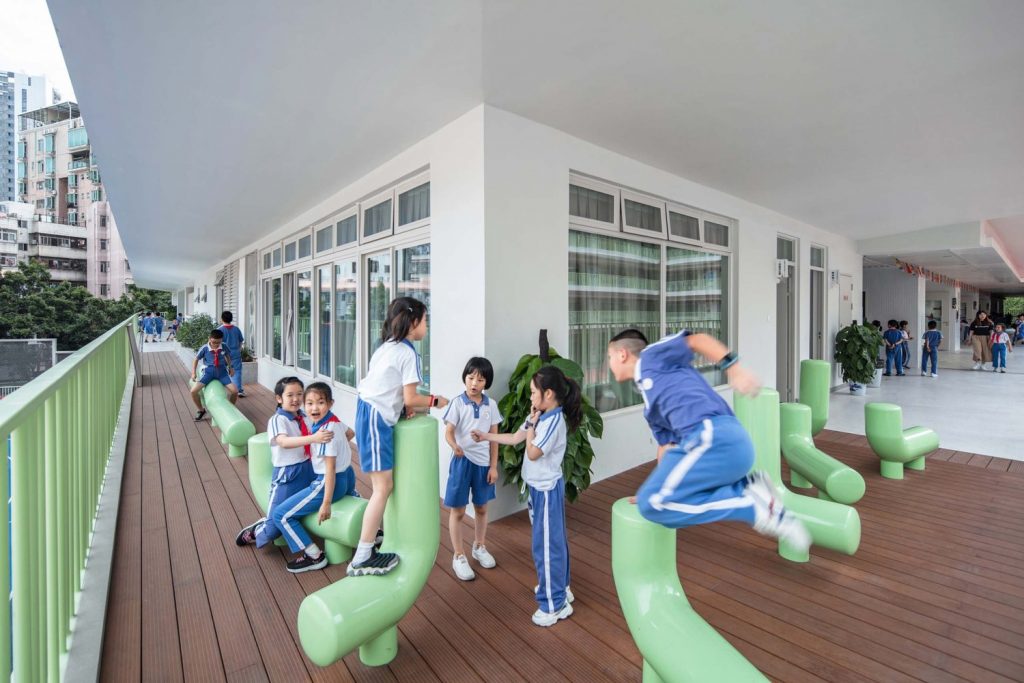
Xinsha Primary School by 11architecture
The new school building with a total construction area of about 37,000 square meters was designed on the demolished old school site, as part of the 8+1 Futian New Campus Action Plan initiated by the Shenzhen Municipal Planning Bureau.
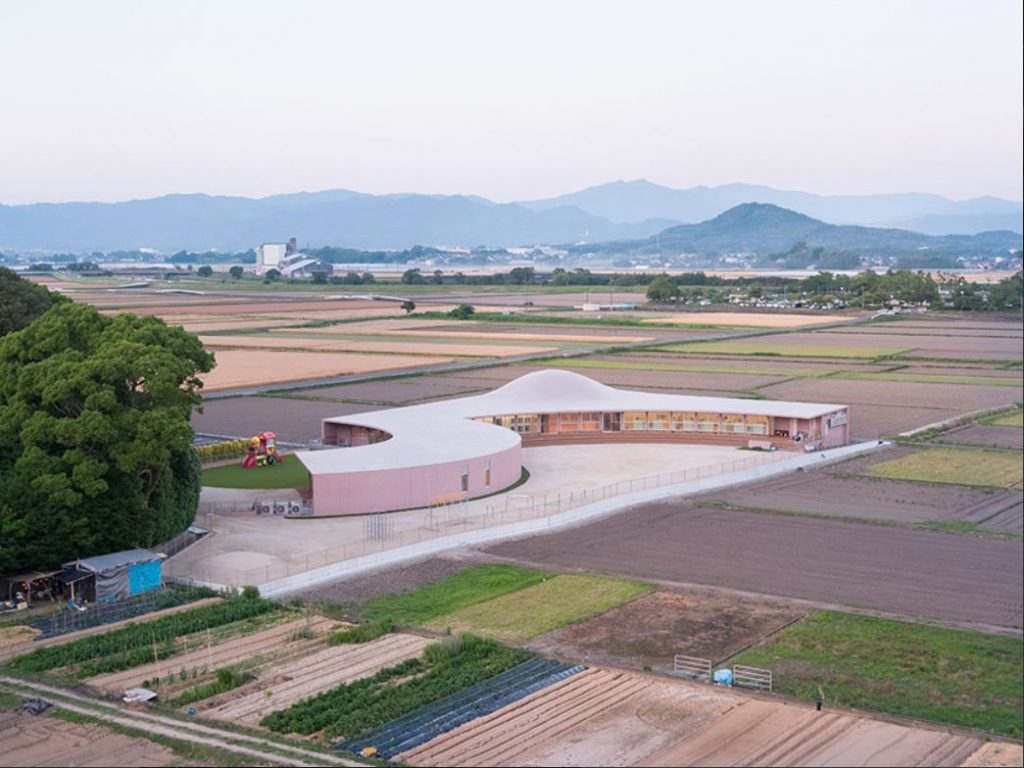
Subaru Nursery by Ryuji Fujimura
The idea behind the Subaru Nursery in Japan is rather practical – as the project started in 2016, right after the 2016 Kumamoto Earthquakes, the clients needed a durable building where children would be securely protected. Local architect by Ryuji Fujimura, however, managed to create a continuous scenery where the architecture merges into the surrounding landscape and echoes the shape of the Hanatate Mountain that can be seen in the distance.
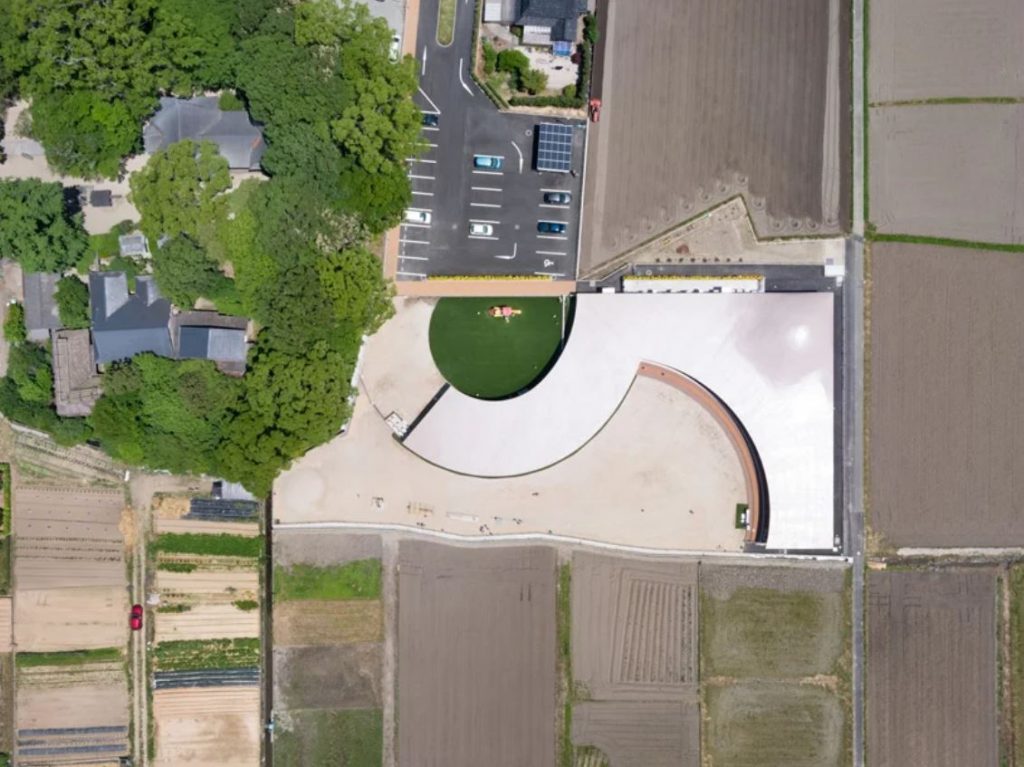
Subaru Nursery by Ryuji Fujimura
The nursery school places great emphasis on physical education, so in order to facilitate children’s physical activities according to the level of their physical growth, the brief called for two separate nursery rooms to accommodate two different age groups. The architect came up with a design that features two gardens adjoining each nursery room – one facing the adjacent sacred grove of a local shrine on the west side, and the other opening up to the vast expanse of rice fields and the panoramic views of the mountain range on the south side.

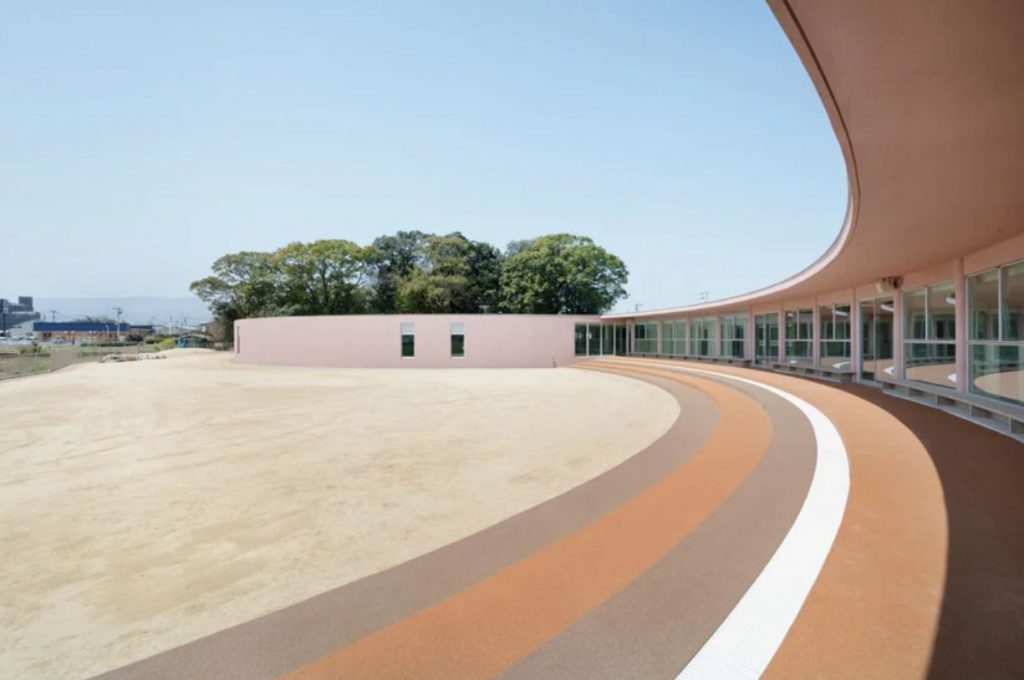
Subaru Nursery by Ryuji Fujimura
Meandering around the gardens is a sinuous building, with administrative rooms placed at “nodes” fir teacher to supervise children activities outside. In addition, an assembly hall with a raised stage is located at the corner, constituting an irregular S-shaped floor plan.
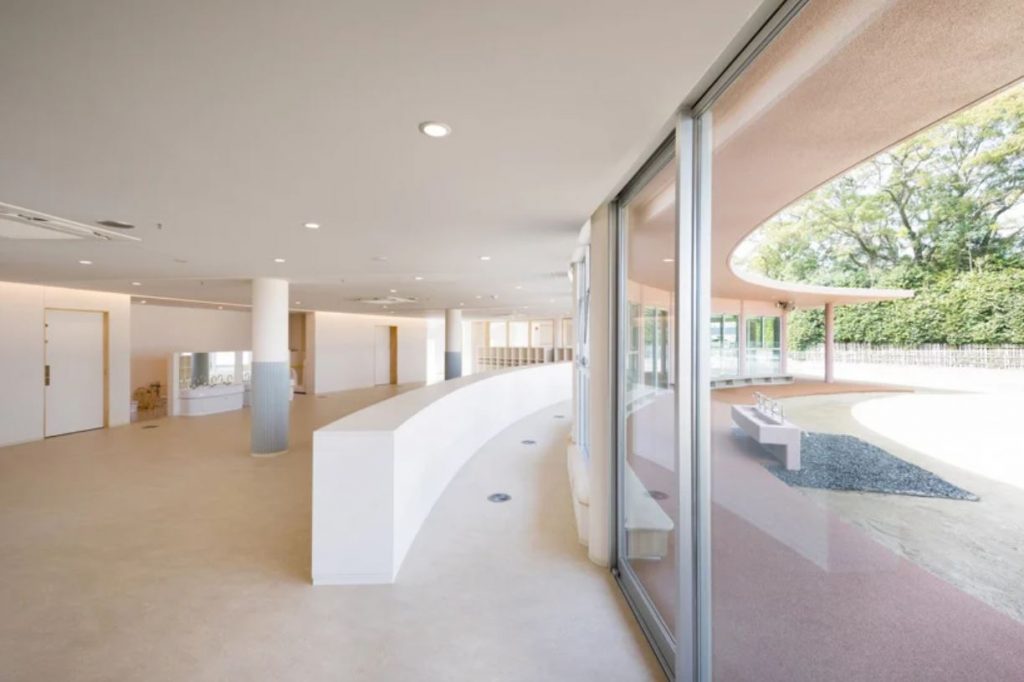

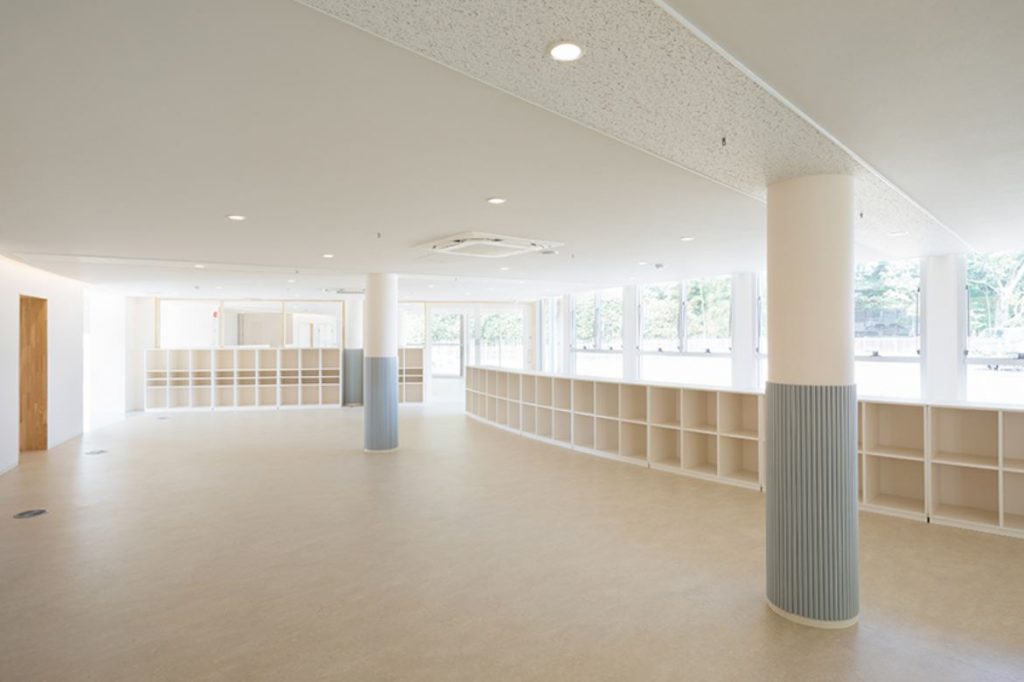
Subaru Nursery by Ryuji Fujimura
Using 180mm thick concrete slabs the architects created an integrated structure, where walls seamlessly turn into two metres deep eaves, which are meant to shield the building from heavy rain and strong wind in case of typhoon, and gently rising three-dimensionally curved roof that was decided through design optimization analysis aiming to minimize the structural strain.

Bangre Veenem School Complex by Albert Faus
The development of the new Bangre Veenem School Complex from the existing Primary school in the village of Youlou in Burkina Faso is part of the Ministry of Education’s programme aiming to fight against school dropouts by unifying isolated schools into school complexes where education is provided from nursery to high school.

Bangre Veenem School Complex by Albert Faus
The task of the local architect Albert Faus was to construct a secondary school as well as auxiliary buildings, including canteen, staff changing rooms, water tank and other service areas, over the plot of more than 8 hectares, since schools in Burkina Faso’s villages are usually formalized as multiple ground floor pavilions scattered over large areas of land.

Bangre Veenem School Complex by Albert Faus
The architect chose to reduce the intervention area by 40% in order to minimize the imoat on the existing housing communities and their farmlands and divide the property into two zones, North and South, with a large public square in between, to prevent the perimeter closure of the school from turning it into a barrier.

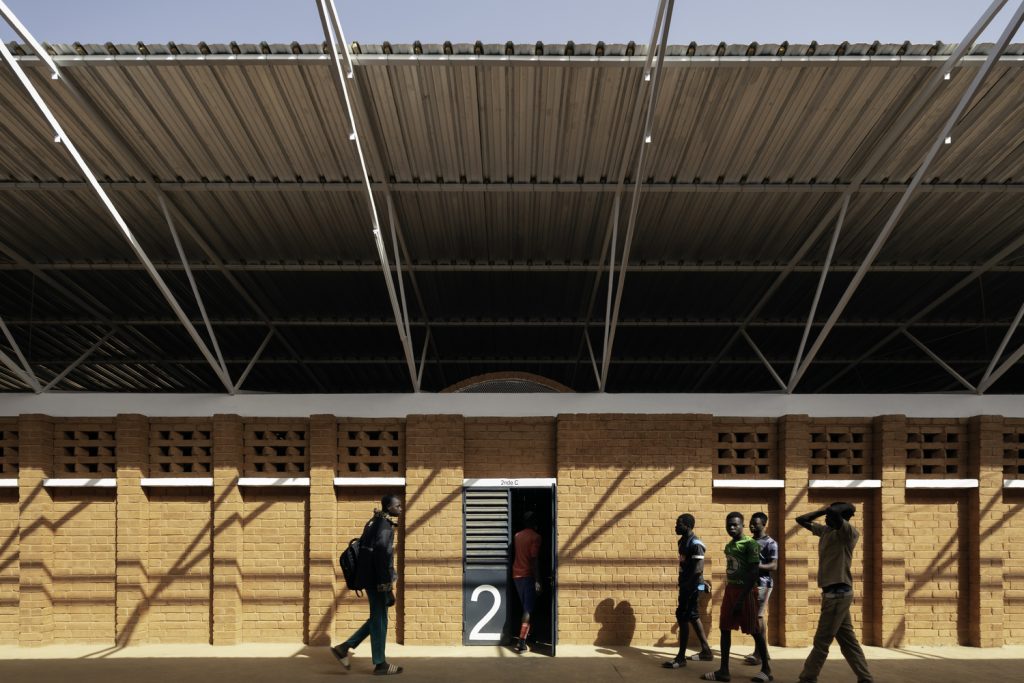
Bangre Veenem School Complex by Albert Faus
The North accommodates the Secondary School, the Central Administration and its parking spaces, and in the South the buildings for the Nursery, the Canteen and its auxiliary and parking areas are situated. Together with the plaza between them, the two form three horizontal strips that shape the central area of the site.
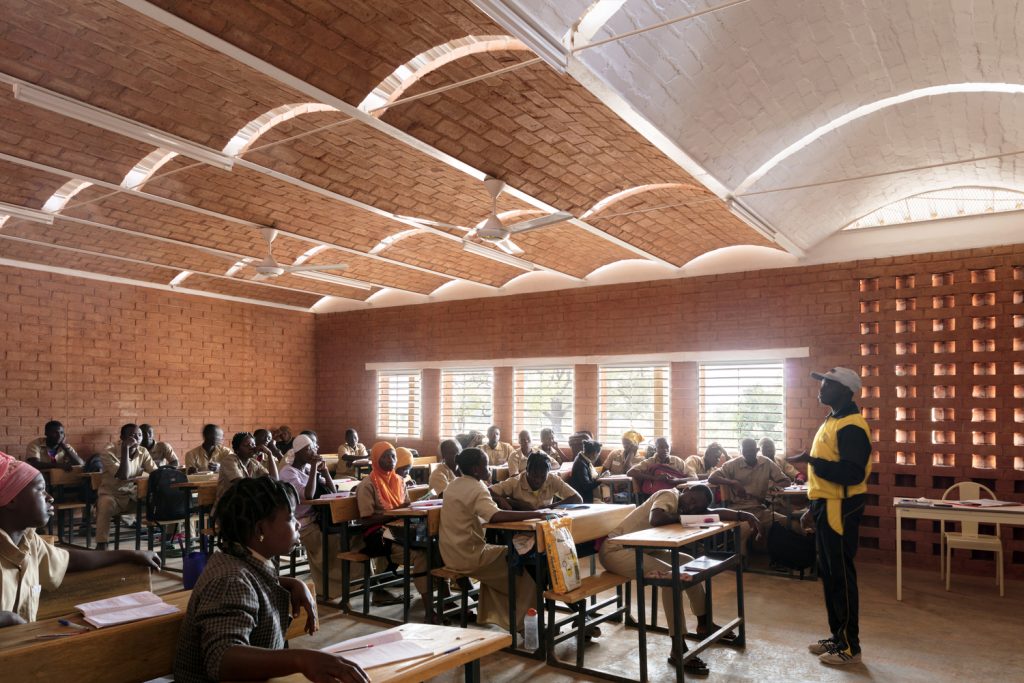
Bangre Veenem School Complex by Albert Faus
The main buildings – Secondary School, Nursery and Administration – feature walls and vaults made of compressed earth bricks (CEB) and a double upper protective roof, while the auxiliary buildings have walls of hick weather-resistant stone, just as the walls making up the central access plaza.
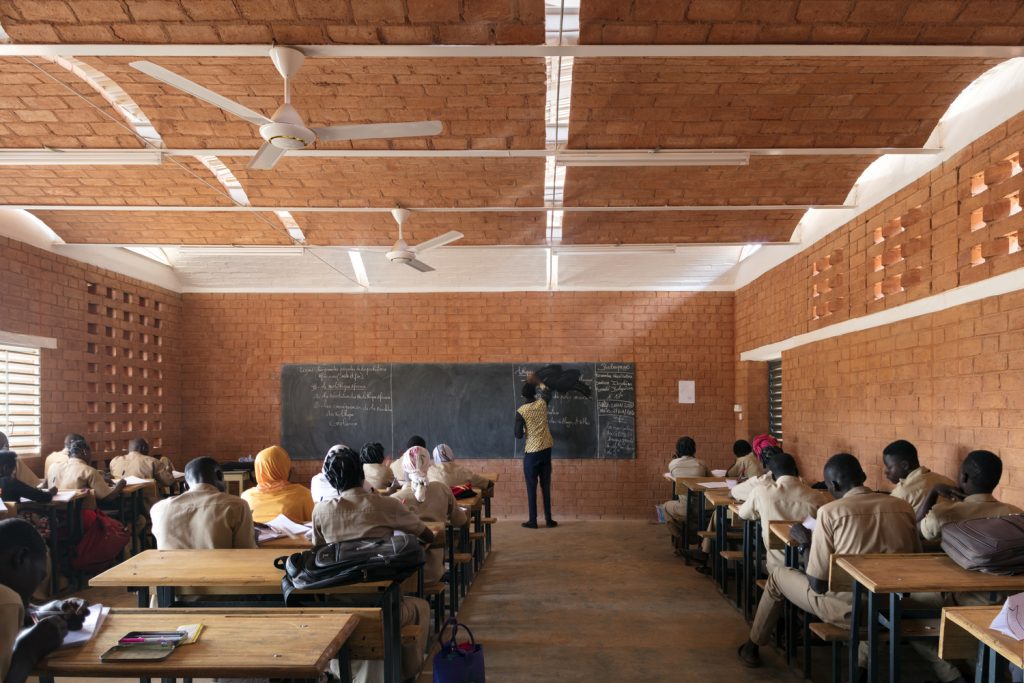
Bangre Veenem School Complex by Albert Faus
Covering the volumes is a large canopy, which is perforated at its ridge to allow natural lighting and ventilation of the interior terrace that provides access to the classrooms. The canopy is also deformed and interrupted in its central section to protect the lower building and to give rise to the large green pergola that covers the main entrance in the south.